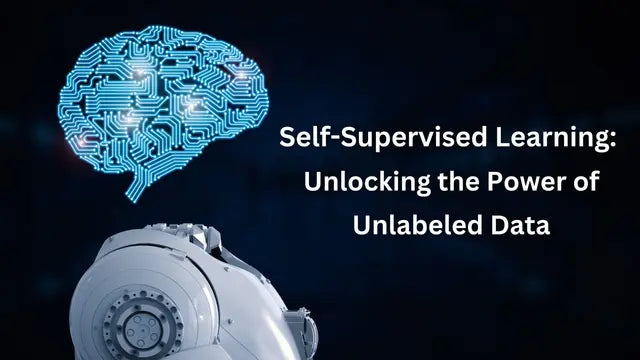
Self-Supervised Learning: Unlocking the Power of Unlabeled Data
Share
In the ever-evolving world of artificial intelligence and machine learning, data is king. However, one of the biggest challenges in training AI models is obtaining labeled data. Traditional supervised learning relies on large, well-annotated datasets, which are often expensive and time-consuming to produce. This is where self-supervised learning (SSL) comes into play, revolutionizing the AI landscape by leveraging vast amounts of unlabeled data to train models effectively.
What is Self-Supervised Learning?
Self-supervised learning is a subset of machine learning that enables models to learn representations from raw, unlabeled data. Unlike supervised learning, which requires manually labeled datasets, SSL creates pseudo-labels from the data itself. This approach significantly reduces the dependency on human annotation while still achieving state-of-the-art performance in many AI applications.
1 How Does Self-Supervised Learning Work?;
Self-supervised learning operates by formulating pretext tasks—auxiliary tasks designed to help models learn meaningful features from data. These pretext tasks involve
Contrastive Learning: Training models to differentiate between similar and dissimilar data points.
Predictive Modeling: Predicting missing parts of data, such as masked words in a sentence or missing pixels in an image.
Clustering and Representation Learning: Grouping similar data points together without explicit labels.
By leveraging these techniques, SSL models learn high-quality representations that can later be fine-tuned for specific tasks such as image recognition, natural language processing (NLP), and speech processing.
Advantages of Self-Supervised Learning
Self-supervised learning is gaining traction due to its numerous benefits:
● Reduction in Labeling Costs –: With SSL, companies and researchers no longer need massive labeled datasets, cutting down annotation costs.
● Scalability –: It can be applied to vast amounts of unlabeled data, making it highly scalable.
● Improved Generalization –: Since SSL learns from diverse datasets, the models tend to generalize better across different tasks and domains.
● Breakthrough in Low-Data Environments –: SSL is particularly beneficial in scenarios where labeled data is scarce, such as medical imaging or rare language processing.
Applications of Self-Supervised Learning
SSL is transforming multiple industries by enabling AI models to extract valuable insights from unstructured data. Some notable applications include
Computer Vision: Enhancing image classification, object detection, and medical imaging analysis.
Natural Language Processing: Powering advanced language models like GPT and BERT.
Speech Recognition: Improving voice assistants and automatic transcription systems.
Healthcare: Assisting in disease diagnosis through medical image analysis.
Autonomous Systems: Enhancing perception in self-driving cars and robotics.
Future of Self-Supervised Learning
As AI continues to evolve, self-supervised learning is set to play a crucial role in shaping the future of machine learning. With ongoing research and advancements, SSL models are expected to become even more efficient, unlocking new possibilities in AI-driven applications. Businesses and developers looking to stay ahead in AI should consider investing in self-supervised learning techniques.
Learn More at Trainomart
If you’re eager to dive deeper into self-supervised learning, Trainomart offers a comprehensive course on the topic. This course covers fundamental principles, real-world applications, and hands-on implementations to help you master SSL techniques. Check out the course here and take your AI knowledge to the next level!
